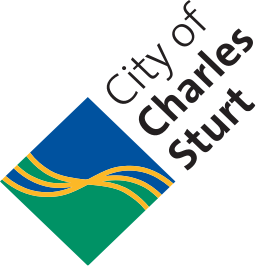We're working to make our local streets safer by reducing driver speeds. We have reduced the speed limit from the default 50km/h to 40km/h in 18 suburbs since 2012.
Reducing the speed limit on our local streets aims to improve local amenity and road safety. Lower speed limits are a proven, affordable way to reduce crashes. Lower speeds significantly reduce the likelihood and severity of crashes, particularly for pedestrians. No death or serious injury on our roads is acceptable or inevitable, and the whole community must work together the address the trauma caused by everyday use of the roads.
Reduced speed limits also create a better environment for residents, reducing noise, improving driveway access and making our streets safer to walk or ride on.
We are investigating a number of road safety treatments to invest in public safety, including changes to driver behaviour and physical devices. If driver speeds aren't reduced by the 40 Area signs, we will seek to install traffic calming measures to reduce driver speeds.
You can see a 40 km/h area map for the City of Charles Sturt.
FAQs
Why 40km/h?
Why are low speeds important? If a car hits someone at 50km/h, the driver is twice as likely to kill them than if the car had been travelling at 40km/h. The faster you go, the further you travel before you stop and therefore the harder you hit something, or someone. Speed is a contributing factor in about 1/3 of fatal crashes.
Lower speed limits are just revenue raising.
Council does not enforce speed limits, and does not earn any revenue from any SAPOL enforcement of the road rules. SAPOL are only notified of the change in speed after Council have voted to implement a 40 km/h speed limit.
There are no crashes in my area, so lowering the speed limit is pointless.
In the City of Charles Sturt, on average every 3 days a road user is injured on our local streets. That is only local residential streets, not arterial roads. Crashes can occur at any time and on any street, and lowering the speed to 40 km/h has been proven to reduce crashes.
I’m a good driver, why should I be punished?
Even good drivers make mistakes, and many crashes involve two or more parties. By slowing everyone down just a little, this may mean you are able to avoid a driver who isn’t paying attention to the road or a child that hasn’t looked before running out onto the streets. We’re all human, we all make mistakes, and our residents have told us they don’t want anyone to have to pay for one mistake with their life or their health when losing a few seconds a day in travel time is what can be the difference.
Lower speed limits just annoy drivers, cause more road rage and will make our streets move slower.
Based on feedback from SAPOL, there is no evidence of increased road rage incidents in areas designated by either 40 km/h or 50 km/h speed limits. Delays to drivers are generally caused at intersections, from congestion and from finding a car park. We always recommend to residents who are concerned with this to try the difference before the 40 km/h speed limit is brought in and see the change in driving time.
Enforcement of speed limit
Enforcement of the lower speed limit is undertaken by the South Australian Police (SAPOL), who operate independent to Council. Council does not receive any revenue generated by SAPOL enforcement. Major roadways will remain at their current speed limit.
This is a waste of money. Invest in a speed hump instead if you want to slow people down.
Lowering the speed limit in a whole area generally costs between $5,000 - $10,000. In comparison, the average roundabout costs over $100,000, and even a based bitumen speed hump costs approximately $5,000 however needs to be installed in regular intervals along the entire length of the street. For the same costs as a single treatment, we can cover a whole area, which is an equitable use of rate payer money, and has a much wider community benefit than a single treatment on a single street.
Sign Locations
The locations of signs are approved by the Department for Infrastructure and Transport (DIT) and signs will only be relocated where road safety risks or impacts to future development are identified.
See a map for each suburb:
